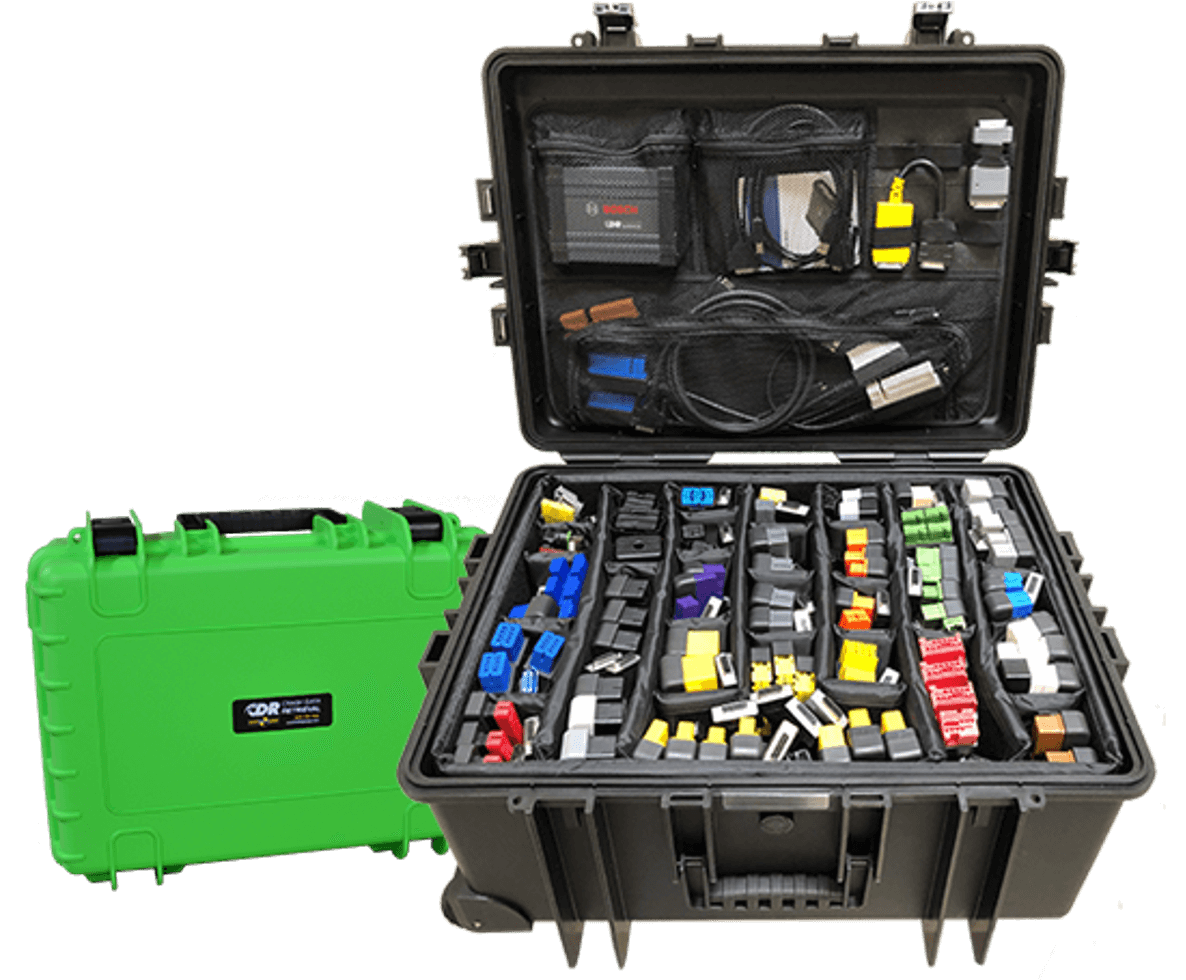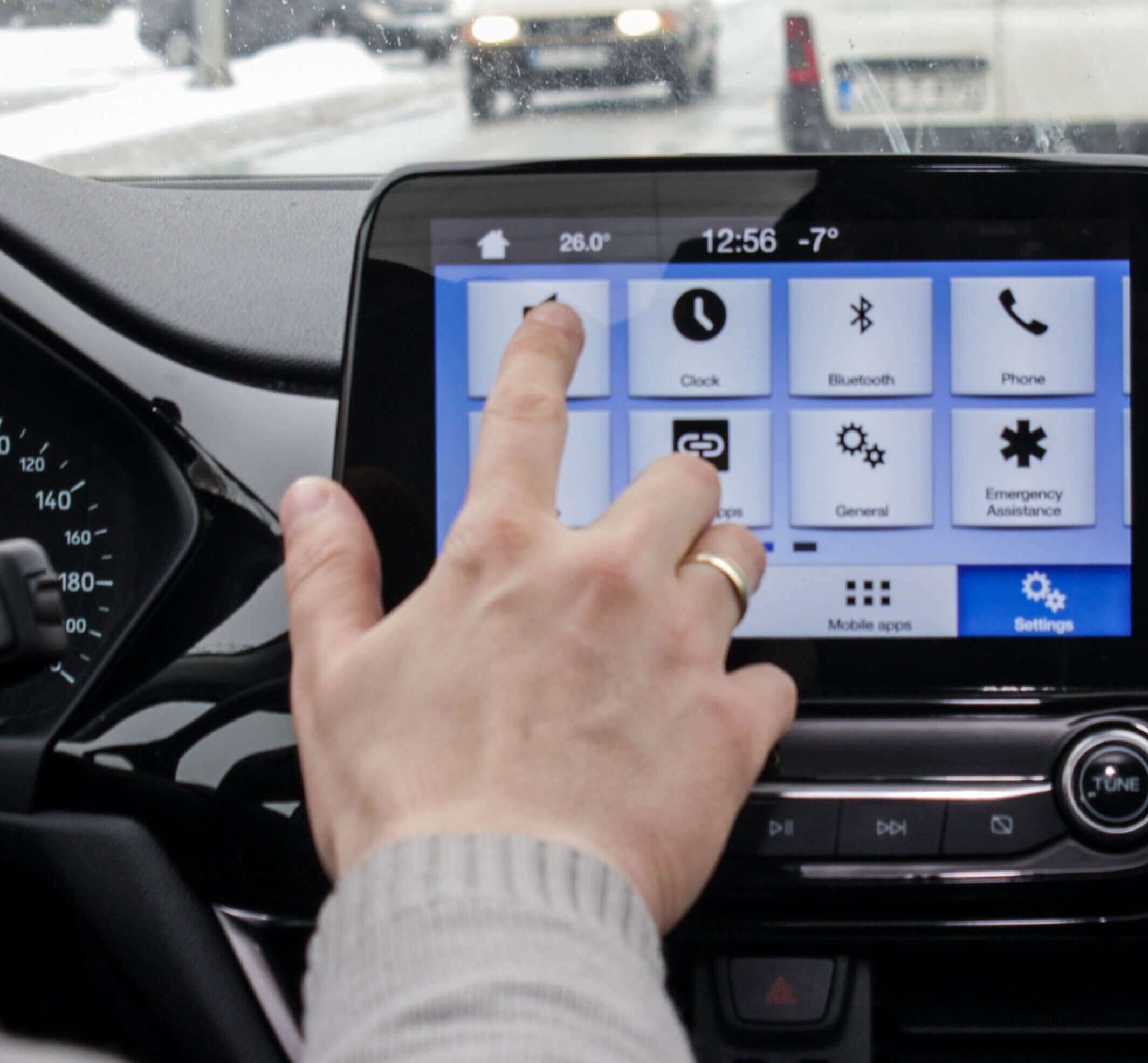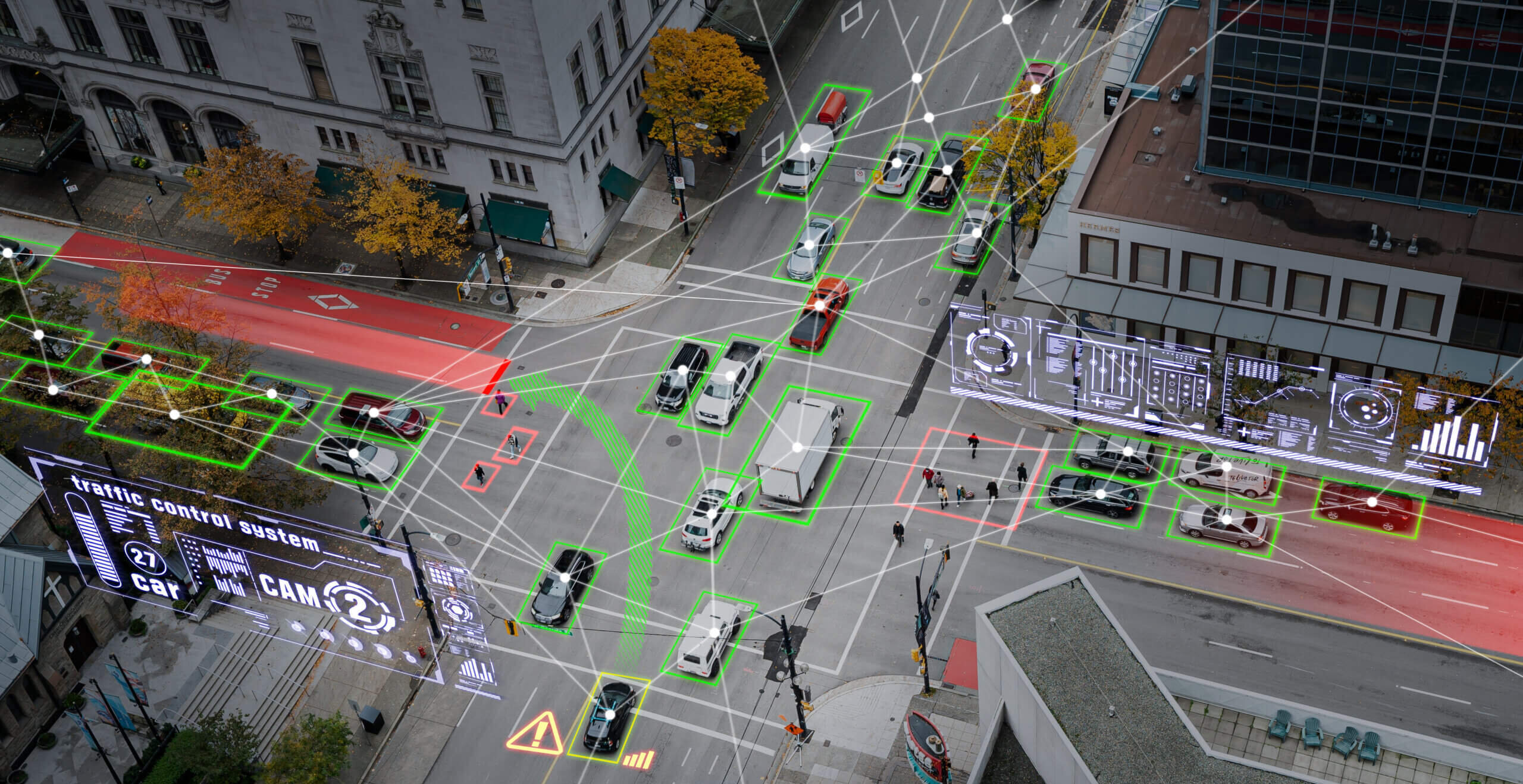By Andrew Happer, MBA, M.Eng., P.Eng., CFEI
Motor Vehicle Data: Part One
What is motor vehicle data and how can it be used?
In the age of advanced automotive technology, vehicle owners may not be fully aware of the wealth of information stored, tracked, and wirelessly communicated by modern motor vehicles. This extensive data includes engine fault codes, operational characteristics, collision events, travel routes, camera images, and sometimes video. Law enforcement professionals and forensic engineers possess sophisticated tools to extract and analyze specific data for investigations related to collisions and hit-and-run incidents. However, navigating the ownership and accessibility parameters of this data is essential before attempting to harvest the information.

Diagnostic Events
The longest standing data stored on both passenger vehicles and heavy trucks has been the trouble codes. These diagnostic trouble codes (DTCs) are recorded and kept in local memory until cleared. In some systems, the odometer reading at the time of the tripped code is recorded along with other operating parameters (e.g., steering wheel angle, vehicle speed, accelerator pedal position). Recorded codes, and when they occurred, can create a timeline of events regarding a vehicle’s condition and help pinpoint when the vehicle experienced a particular issue. Although this information is useful for auto mechanics to diagnose vehicle problems, it is also very useful to help identify operational issues that lead to a vehicle failure or when a driver alleges a vehicle defect.
Collision Events
The supplemental restraints in a passenger vehicle, including air bags and seat belt pretensioners, are controlled by an electronic module that has been colloquially called the black box. This module is connected to sensors that evaluate whether the supplemental restraints need to be deployed at the onset of an event, which is characterized by a sudden change in the vehicle’s acceleration or deceleration. The secondary function of these modules is to record data surrounding the event. Vehicle manufacturers use these recordings to ensure their restraint systems are working properly and refine system performance; however, this information can also provide insight to verify events in a reported claim. The majority of passenger vehicles on the road have an event data recorder (EDR).


The collision event data recorded by passenger vehicle EDRs includes acceleration and change in velocity, which determine the impact severity, and five to eight seconds of pre-crash data recorded between 1 and 10 times a second. The vehicle speed, engine RPM, brake status, accelerator pedal application, throttle position, steering wheel angle, individual wheel speeds, stability control engagement, anti-lock braking status, vehicle spin (yaw) rate and accelerations can be recorded. These parameters can indicate the vehicle motion and driver’s actions leading up to the crash event, helping determine contributing factors. There are some motorcycles that also have the capability to record event data. Triggered events can be related to air bag deployment or motorcycle tip-over with a specific rear wheel rotation speed. Heavy trucks also record similar event data but do so as part of their engine control modules (ECMs), which are mounted directly to the truck engine. In heavy trucks, the specific data recorded depends upon the engine manufacturer, but the majority of recorded events on commercial trucks are related to hard braking, sudden decelerations, critical faults, and last stop events.
ADAS
Advanced Driver Assistance Systems (ADAS) is the latest technology that is being put into both passenger and commercial vehicles. These systems use a combination of radar and cameras to detect issues and provide warnings to the driver. If the warnings are not enough to trigger the driver to correct the vehicle, the vehicle may actively intervene with braking or steering. These systems come in many forms including blind spot warning, adaptive cruise control, forward collision alert, lane departure assist, pedestrian detection and active collision braking. Some vehicle models record information during detected events, which includes timing and separation distance of sensed hazards. The key difference with this data compared to EDR data is that a collision doesn’t need to occur for the system to record an event. This means the event information can be used to confirm the presence of an identified hazard, such as another vehicle.

Cameras used in ADAS are typically mounted at the top of the windshield and can record low-resolution images related to sensed events. Some Tesla models are equipped with several cameras for monitoring traffic around the vehicle. The optional Sentry mode will wake up the cameras when an object comes into close proximity to the Tesla. This mode can capture video while the Tesla is parked and can be very useful for monitoring attempted thefts, vandalism and hit and runs.
Telematics
Telematics devices use cellular data to communicate with the internet and can be found in different forms. Some vehicle manufacturers integrate these systems into the vehicle, and it is up to the vehicle owner whether they subscribe to the monthly service (e.g., GM On-Star). These systems can be used to monitor vehicle maintenance issues and provide diagnostic reports. Other features allow them to report crash occurrences, call emergency services and provide navigation details. In cases of vehicle thefts, telematics devices can be used to track a stolen vehicle. It is worth noting that Teslas automatically communicate with Tesla servers, which are continuously logging details about the vehicle. This data is stored in a Diagnostic Log that Tesla owners can request a copy for a specific date, which could include video recordings.
For those vehicles that don’t have telematics built-in, aftermarket systems can be installed. This is a common practice for vehicle fleets where systems may be used to provide information to the fleet manager regarding real-time and historical data about vehicle operation. These systems retain information for years, as data is continuously uploaded to online servers. The type of data includes vehicle location, speed, direction, and other sensor and video feeds. Individual vehicle owners can also get plug-in devices that transmit information to track their vehicle operation. This is useful for those that want to monitor a teenager’s use of the family vehicle or have their driving behaviour monitored by an insurance company to benefit from lower insurance rates.
Infotainment Systems

The infotainment system refers to the interface that is used by a driver to adjust vehicle settings, obtain navigational guidance, connect to a smart phone and play music. These systems, depending on the vehicle model, can record vast amounts of data and the data extractions range in complexity. In some cases, a USB stick can be simply inserted into the system to copy files, and, in other cases, the module needs to be removed, disassembled and the circuit board accessed using specialized electronic components.
Modules can record handheld device connections including the unique identifier, contacts, media files, call logs, text messages, and internet activity of smart phones in the vehicle.

Some can also record vehicle events such as a door opening, gear shifts, hard brake and acceleration events. If the vehicle has navigation enabled, then these events can have date and location data included. With navigation also comes track logs, which show the routes taken by the vehicle. Some of the data on these systems can be stored for the lifetime of the vehicle. This means that information stays with the vehicle as it changes ownership. Even if the system is wiped by the user, the data can still be obtained through an appropriate download. There are many different possibilities on how this data can be used, but it is very useful for confirming the where and when of an incident, vehicle operation at a certain location or time, and who was in the vehicle at a reported time.
Connected Vehicles
Intelligent Transportation Systems (ITS) are being developed that use advanced communications to solve transportation challenges. They are being implemented in roadways, intersections and traffic management centers to link infrastructure and vehicles in real-time. Canada is playing a lead role in the development of this technology with the ACTIVE-AURORA partnership in BC and Alberta with the only real-world test bed for Vehicle-to-Infrastructure (V2I) communication. This is the wireless exchange of data between vehicles and road infrastructure. Vehicular communication systems are computer networks in which vehicles and roadside units are the communicating nodes, providing each other with information.

Roadside units can take data from vehicles and evaluate traffic conditions, optimize signal timing and communicate back to other vehicles. Some infrastructure systems simply detect Bluetooth-enabled devices to evaluate traffic flow patterns, while others communicate with the vehicles and alert the driver to impending threats, which can be effective in avoiding accidents and traffic congestion. Connected vehicles can send out what’s called a Basic Safety Message. The message is required to include some standard information such as the vehicle’s GPS position, speed, heading, steering wheel angle, acceleration and brake application. Additional parameters containing a variable set of data elements can include ambient air temperature/pressure, traction control status, wiper status and antilock brake system status. This information can be used to help communicate changing road conditions and when hazardous situations arise. Currently, there is no method for third parties to access the transmitted data.
